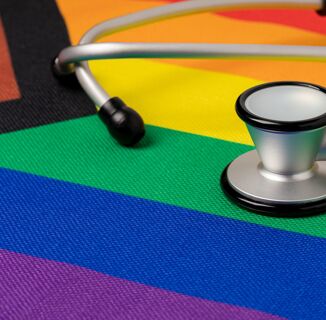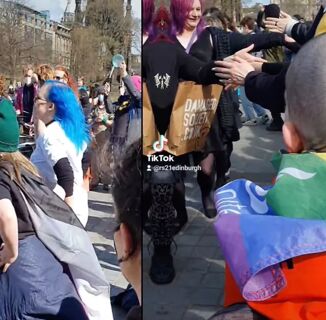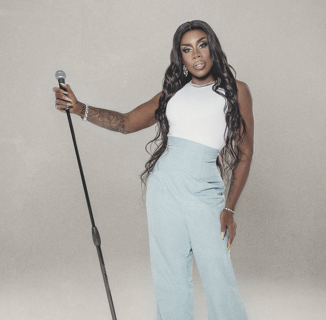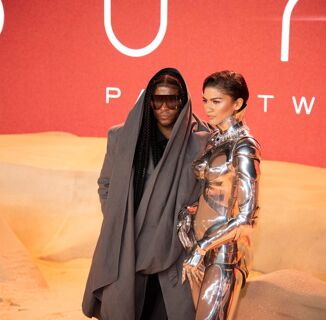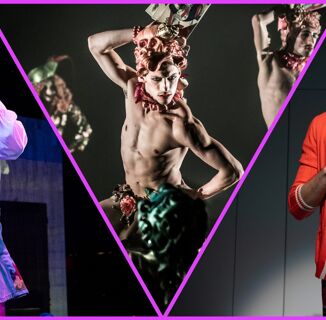Sixteen years after pundits declared 1992 the “year of the woman,” queer women are making their mark in the 2018 primaries in unprecedented fashion.
Following Thursday’s New York primaries, 11 LGBTQ women have now won Democratic nominations for the U.S. House of Representatives. These candidates include Kansas’ Sharice Davids, Minnesota’s Angie Craig, and Texas’ Gina Ortiz Jones. If elected in November, each of these women would be their state’s first openly LGBTQ representative in the lower house of Congress.
While 11 might not seem like a large number, it’s actually unprecedented and historic.
According to data provided to INTO by Ballotpedia, 199 female candidates (in total) have won the Democratic nomination in their respective House races—itself a landmark achievement. LGBTQ women make up 5.5 percent of that sum.
That ratio is significant because it is nearly identical to the percentage of women in the United States who identify as either queer or transgender. According to a 2017 survey conducted by Gallup, 5.1 percent of female respondents say they are a member of the LGBTQ community.
Thus, LGBTQ women are actually overrepresented ever so slightly in the U.S. House numbers. The share of queer and trans women among Democratic nominees actually exceeds overall population estimates.
In a perfectly representative democracy, this would happen all the time — the number of queer and trans candidates would always correlate with the general demographics of LGBTQ Americans. But if the past two years have proven anything, U.S. democracy is very rarely perfect.
A report from the Victory Institute published in 2017 showed that only .1 percent of all elected officials in the U.S. are out and proud. For public office to catch up with society, 21,000 more LGBTQ politicians would have to win election.
While such a reality is a long way away, this year’s U.S. House races give LGBTQ advocates reason to hope that day is coming.
“We are seeing a rainbow wave of LGBTQ candidates running across the country, but it is our LGBTQ women candidates that are outperforming all expectations,” said Elliot Imse, senior director of communications for LGBTQ Victory Fund.
“LGBTQ women are severely underrepresented at every level of government—including in U.S. Congress,” Imse added in an emailed statement. “To see LGBTQ women equitably represented among the historic number of Democratic women Congressional nominees is a milestone and a promising sign that we are on the right path.”
The Democratic National Convention further pointed out that these successes represent just a handful of the many records broken by LGBTQ women in this year’s midterms.
Lucas Acosta, LGBTQ Media Director for the DNC, cited the examples of Vermont’s Christine Hallquist and California’s Katie Hill. If elected, Hallquist would be the first transgender person to ever serve as governor of a U.S. state, while Hill would be the first openly LGBTQ Congresswoman from the Golden State.
“LGBTQ Democrats are stepping up to the plate, making history, and breaking records,” he said in an emailed statement to INTO. “Our community deserves a seat at every table and a voice in every legislature.”
Pundits have referred to this phenomenon as the “Rainbow Wave.” Across 14 states, Democrats have nominated at least 32 openly LGBTQ people — both men and women — for either federal or statewide office in 2018. Meanwhile, at least 101 LGBTQ Democratic politicians running for state legislative seats won their primary races for the first time.
While Acosta claimed women are “leading the way,” male candidates haven’t fared quite as well as their female counterparts in the current election cycle.
Nine LGBTQ men won Democratic nominations for the U.S. House of Representatives this year. These out candidates include David Cicilline, who is running for reelection in Delaware’s First Congressional District, Rick Neal, who is campaigning for his first term in Ohio’s 15th District, and Chris Pappas, who won the primary for New Hampshire’s First District on Tuesday.
But when looking at the number of Democratic nominees overall, the segment of that roster that’s queer or trans comes out to just 3.3 percent.
To put those numbers in perspective, let’s compare them to overall population data. In 2017, Gallup found that 3.9 percent of male respondents identified as LGBTQ. That means that if LGBTQ women are slightly overrepresented in the Democratic pool for U.S. House races, men remain underrepresented.
In fact, the totals for Democratic men are only representative if we go back to 2012 population data. When Gallup polled 121,000 people for what was then the biggest survey of America’s LGBTQ community in history, results showed that 3.3 percent of men identified as queer or transgender — the exact same figure as this year’s crop of liberal U.S. House candidates.
The U.S. House of Representatives is at least six years behind when it comes to the inclusion of gay, bisexual, and trans men.
In an email to INTO, the advocacy group Run with Pride celebrated this year’s groundbreaking progress while highlighting the need for further gains in U.S. politics. For instance, Wisconsin’s Tammy Baldwin remains the only LGBTQ politician in history to win a seat in the U.S. Senate — and faces historic opposition to reelection.
National Communications Director Jordan Allen claimed having voices like hers in the legislature ensures “our democracy is… truly representative.”
“Now that primary season is over, we are excited to see [LGBTQ candidates] win in November,” Allen said in a statement. “Nobody can address the issues of our community as well as we can.”
Help make sure LGBTQ+ stories are being told...
We can't rely on mainstream media to tell our stories. That's why we don't lock our articles behind a paywall. Will you support our mission with a contribution today?
Cancel anytime · Proudly LGBTQ+ owned and operated
Read More in Impact
The Latest on INTO
Subscribe to get a twice-weekly dose of queer news, updates, and insights from the INTO team.
in Your Inbox


